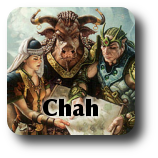
I would like to applaud Wizards of the Coast for its epic, brave choice today, announcing to ban Jace, the Mind Sculptor and Stoneforge Mystic.
There are many factors leading up to the dominance of those two cards in Standard. Some of them couldn't be helped, at least with the knowledge at the time. But one of the contributing factors that could have been avoided was the lack of general-purpose answer cards like Pithing Needle to fight problem cards.
In today's post, I'd like to discuss designing cards that answer other cards.
A few weeks ago, I was thinking about cards that can hurt Jace, the Mind Sculptor - hopefully in a way that doesn't hurt all planeswalkers. I thought, it had to be good even when it got bounced by Jace, and it wanted to punish the Brainstorm ability:
 |
| (Click on image to enlarge) |
 |
| (Click on image to enlarge) |
 |
| (Click on image to enlarge) |
Kirblar's tweet:
"...it's a design I've had kicking around my head for a long time. Turning Brainstorm into -3 cards = hilarious."Since hybrid tends to be reserved for special occasions, I made a slightly edited artifact version:
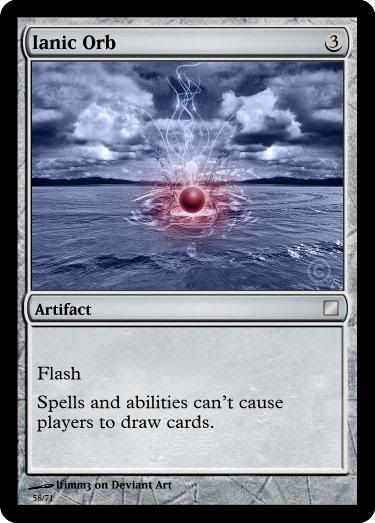 |
| (Click on image to enlarge) |
 |
| (Click on image to enlarge) |
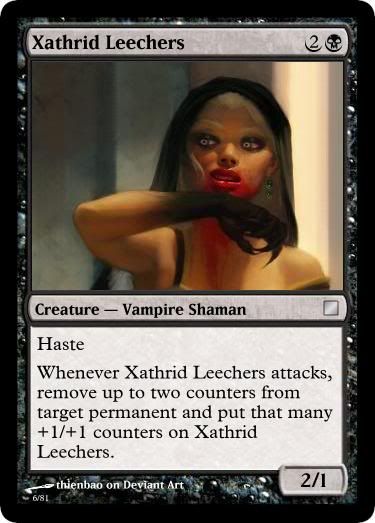 |
| (Click on image to enlarge) |
As for these hasty guys, I guess the format already had some strong Jace-killers like Hero of Oxid Ridge and Thrun, the Last Troll, which Aaron Foresythe mentioned in his explanation of the developments of the Jace issue.
For purposes of providing safety valves, we've got to regard the metagame as something inherently unpredictable, since the point of Magic environments is that they don't come pre-solved. If it happens that the metagame doesn't favor the decks that proactive answers like Vengevine go into, those cards can't suppress the card they're intended to suppress.
So those creatures I designed have a decent chance of being misses, even if I tweaked them to get their power level right.
I tried to make some general purpose answer cards in the vein of Pithing Needle. Ideally, there should be some kind of fluctuating, self-correcting metagame where a strategy that gets dominant can be hated out. In real life, I think it's hard because threats tend to be stronger than 1-for-1 answers in modern day Magic. Threats in constructed often provide card advantage or some immediate impact by the time they hit play. But even so, as a bare minimum, there still need to be tools for fighting every kind of card in the environment.
Torpor Orb was a great addition in New Phyrexia. The inclusion of Dismember was so fortunate, even though it warps the color pie forever, since it provides a way to fight the Splinter Twin - Deceiver Exarch combo, a combo which was off of R&D's radar. But the format could probably use tools for other categories, including tools for fighting tutor effects (tutoring is so rampant!), as well as lands with special abilities (such as Valakut).
Here's one for activated abilities:
 |
| (Click on image to enlarge) |
At the same time, hoser cards shouldn't be too universally useful. If they get maindecked on their own merit, that doesn't constitute an adaptive, self-correcting metagame.
Also, if the card's effect is too wide, it might incidentally hate out other cards. When people start putting it in their boards to fight the dominant deck, its presence could potentially end up hurting another underdog deck more.
So I need to be careful that a card isn't too generally useful. At this point, I have no idea whether the power level for this one is too strong or too weak.
Next up, a card that hurts tutoring:
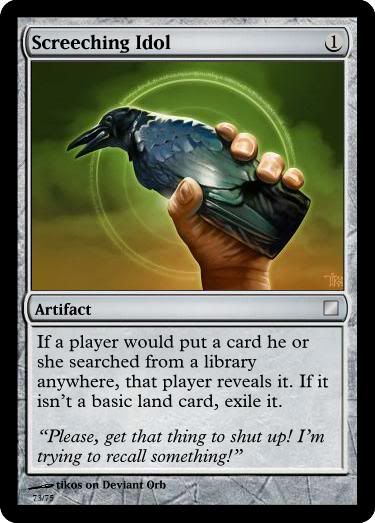 |
| (Click on image to enlarge) |
I didn't want to make one that costs 4, because even nonland tutoring often takes place on turn 2 these days. Also sideboard cards must be flexible and fit into decks of many different builds. Not every deck has the luxury of swapping out a 4-drop to accommodate a 4cc answer card.
I made the next one as a card that hurts both Jace and tutoring:
 |
| (Click on image to enlarge) |
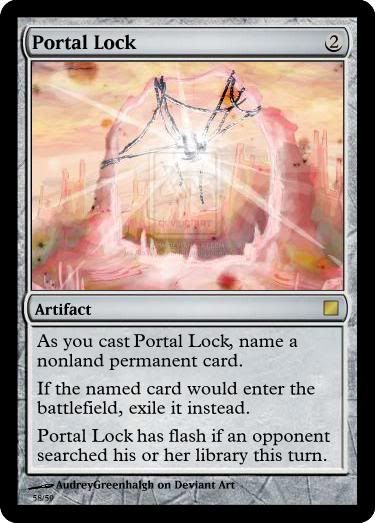 |
| (Click on image to enlarge) |
Naming cards also reward skill. The caster has to figure out what the opponent has in hand as well as what card would cause the most impact based on the current board. (Although I'm speaking more based on theory rather than experience here.)
Next, a card that fights Equipment:
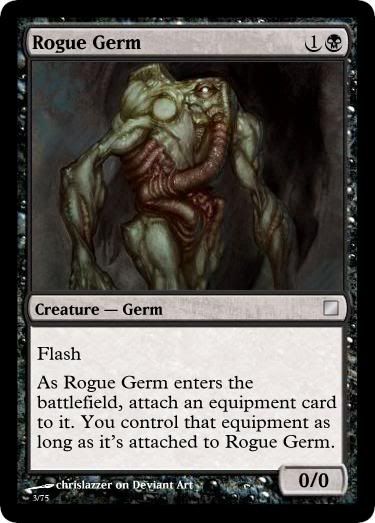 |
| (Click on image to enlarge) |
 |
| (Click on image to enlarge) |
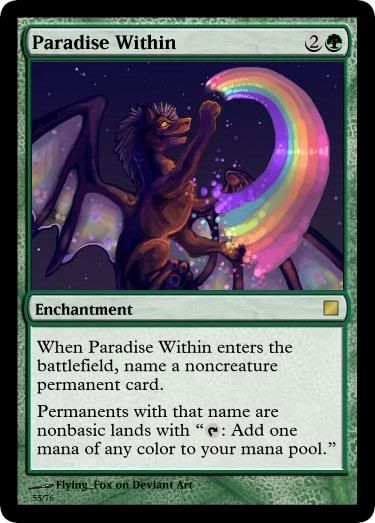 |
| (Click on image to enlarge) |
Designing cards to fight other cards is a great exercise. It makes you think about what kind of effects can hurt what strategies. It also makes you think about the dynamics between decks of different styles, and the rock-scissors-paper battle of metagaming.
Constructed isn't my forte and I was only able to scratch the surface of those points, but I hope you enjoyed it.

Favorite cards:
ReplyDeleteIan's Veil of Ignorance: Simple, effective, super red.
Rogue Germ: Doesn't need flash, but otherwise brilliant. Stealing/Borrowing equipment doesn't feel black, but 0/0 germ is awesome here and those are clearly black. Too weird to make a red sorcery/instant that puts a 0/0 black germ OTB? Probably fair on 1/1 goblin for 1R.
Gaea's Staff: I love that this deals with fancy land by making them "better." Could see this as the green analog to Blood Moon.
Also liked:
Xenophobic Viashino, Outraged Dragon's cost-reduction effect, Savage Book Burner
Very cool answers. I love Veil of Ignorance, and really love Xenophobic Viashino. That's very neatly subtle; I bet many players will completely miss how good it is against planeswalkers on first reading.
ReplyDeleteMany of the rest of these are awesome as well. A very good post :)
Portal Lock is an unfortunate design, because its abilities come together just the wrong way for hosing things like Tinker or Chord of Calling. It'll gain flash just *after* the moment you want to cast it.
@Jay Treat: You're right, Rogue Germ should probably be red or blue (I've actually designed red and blue variants of it), but I just couldn't resist making a black Germ creature card.
ReplyDelete@AlexC: I'm glad you liked them. Thanks for pointing that out about Portal Lock.
These are all really rather good. Perhaps some a little too complex, but the basic quality of HOW they punish what they punish and how useful they are outside of the problem cards is impressive.
ReplyDeleteRed should have more cards that hurt someone for trying to target them, and Black should have more ways of stealing counters. You've convinced me.
Thanks, that comment means a lot to me.
ReplyDeleteI did realize these cards were textier than printed cards like Pithing Needle. Maybe for cards that ban actions, always keeping the effect in mind becomes a big issue and the need for simplicity is greater than for proactive cards.
But I'm glad you liked the method that these cards punish things.